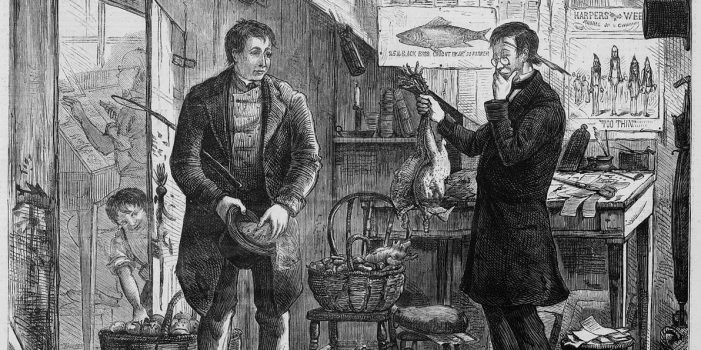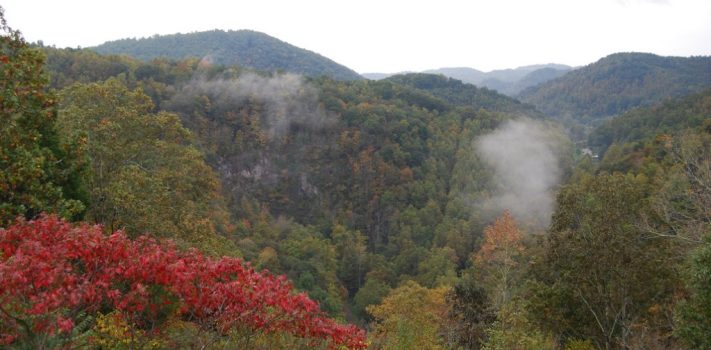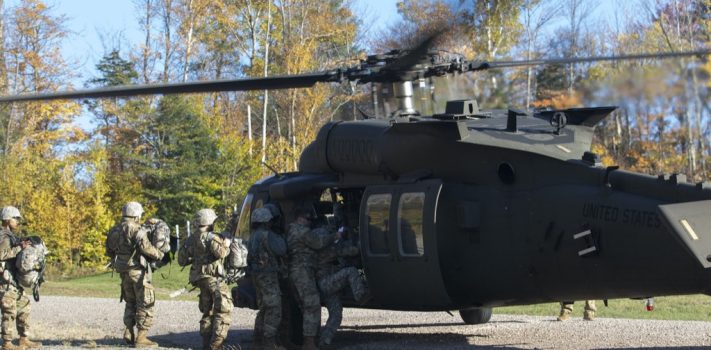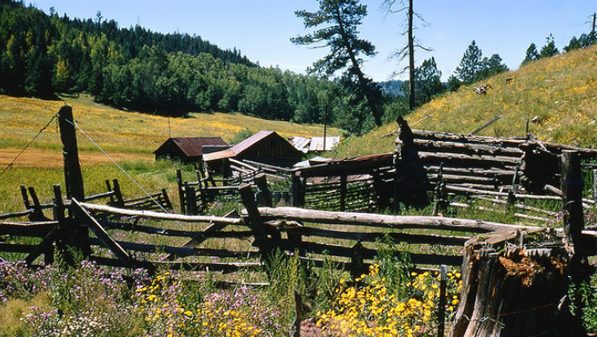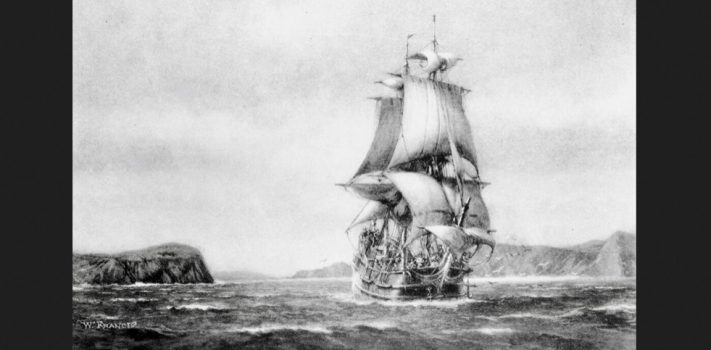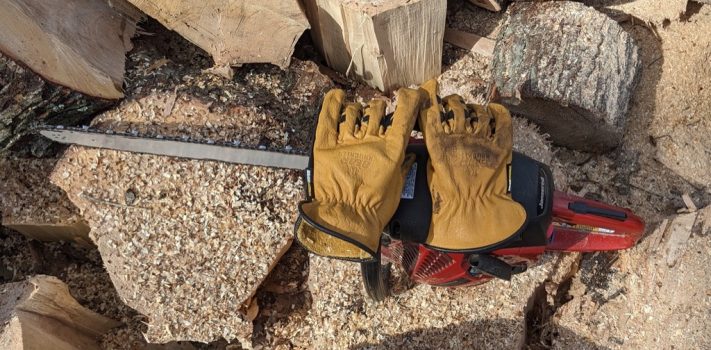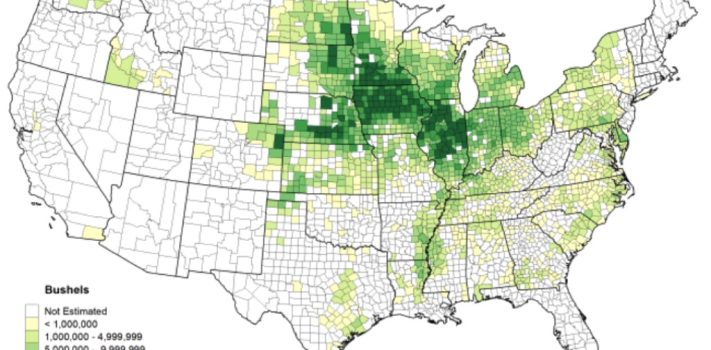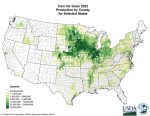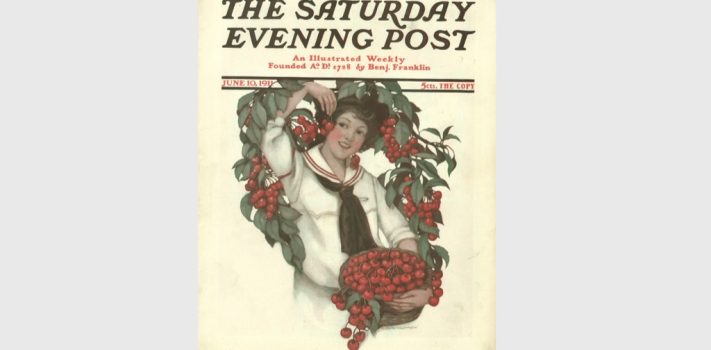“There are only two ways of telling the complete truth — anonymously and posthumously.” – Thomas Sowell
- Ad Elbit PVS14 No Gain White Phosphor 10 year warrantyCall us if you have Questions 800-627-3809
- Ad The Good News About Nuclear Destruction.The lethality of all nukes can be reduced by 90% when you know beforehand what to do and not do.
Preparedness Notes for Wednesday — August 7, 2024
On August 7, 1420, construction began on the dome of Florence Cathedral, designed by Renaissance architect Filippo Brunelleschi.
—
August 7th, 1933 was the birthday of Jerry Pournelle. He, along with Larry Niven authored the survivalist classic Lucifer’s Hammer.
—
SurvivalBlog Writing Contest
Today we present another entry for Round 114 of the SurvivalBlog non-fiction writing contest. The prizes for this round include:
First Prize:
- The photovoltaic power specialists at Quantum Harvest LLC are providing a store-wide 10% off coupon. Depending on the model chosen, this could be worth more than $2000.
- A Gunsite Academy Three Day Course Certificate. This can be used for any of their one, two, or three-day course (a $1,095 value),
- A Peak Refuel “Wasatch Pack” variety of 60 servings of premium freeze-dried breakfasts and dinners in individual meal pouches — a whopping 21,970 calories, all made and packaged in the USA — courtesy of Ready Made Resources (a $350 value),
- American Gunsmithing Institute (AGI) is providing a $300 certificate good towards any of their DVD training courses.
- HSM Ammunition in Montana is providing a $250 gift certificate. The certificate can be used for any of their products.
Second Prize:
- A SIRT STIC AR-15/M4 Laser Training Package, courtesy of Next Level Training, that has a combined retail value of $679
- Two 1,000-foot spools of full mil-spec U.S.-made 750 paracord (in-stock colors only) from www.TOUGHGRID.com (a $240 value).
- Two sets of The Civil Defense Manual, (in two volumes) — a $193 value — kindly donated by the author, Jack Lawson.
- Two Super Survival Pack seed collections, a $150 value, courtesy of Seed for Security, LLC.
- A transferable $150 FRN purchase credit from Elk Creek Company, toward the purchase of any pre-1899 antique gun. There is no paperwork required for delivery of pre-1899 guns into most states, making them the last bastion of gun purchasing privacy!
Third Prize:
- A Berkey Light water filter, courtesy of USA Berkey Filters (a $305 value),
- Three sets each of made-in-USA regular and wide-mouth reusable canning lids. (This is a total of 300 lids and 600 gaskets.) This prize is courtesy of Harvest Guard (a $270 value)
- A $200 credit from Military Surplus LLC that can be applied to purchase and/or shipping costs for any of their in-stock merchandise, including full mil-spec ammo cans, Rothco clothing and field gear, backpacks, optics, compact solar panels, first aid kits, and more.
- A transferable $150 FRN purchase credit from Elk Creek Company, toward the purchase of any pre-1899 antique gun.
—
More than $900,000 worth of prizes have been awarded since we started running this contest. In 2023, we polled blog readers, asking for suggested article topics. Please refer to that poll if you haven’t yet chosen an article topic. Round 114 ends on September 30th, so get busy writing and e-mail us your entry. Remember that there is a 1,500-word minimum, and that articles on practical “how-to” skills for survival have an advantage in the judging.
- Ad California Legal Rifles & Pistols!WBT makes all popular rifles compliant for your restrictive state. Choose from a wide range of top brands made compliant for your state.
- Ad Ready Made Resources, Trekker Water Filtration SystemUsed throughout the World
Bartering in a Post SHTF World – Part 2, by D.K.
(Continued from Part 1. This concludes the article.)
Equivalent Value
When most people think of the word ‘barter,’ they think ‘trade,’ or ‘like-for-like.’ The following is a list of possible items that you might want to consider having for bartering purposes, or charitable giving, should the need ever arise. These are merely suggestions.
Barter Item Categories & Suggestions
| Air Gun/Archery: BBs/pellets, CO2 cartridges Spare bow strings, arrows/bolts |
Food: Freeze dried, #10 cans, MRE Flour, yeast, sugar, wheat Coffee/tea, drink mixes Hand crank grinder (meat/grain), spare parts |
| Alcohol: Homemade wine/liquor Airline mini-bottles |
Fuel: 93-octane, diesel, kerosene, white camp fuel, 1 lb. Propane Fuel stabilizer, anti-bacterial, injector cleaner Spare gas cans, assorted gallons, siphon |
| Ammunition: See the ‘Equivalent Value’ section |
Games/Entertainment: Boardgames, card games, dice Books (assorted reading levels) |
| Baby Supplies: Cloth diapers, pins, powder, rash ointments Clothing |
Honey and Salt
(Both have an almost unlimited shelf life, if properly stored.) |
| Batteries: AA, AAA, C, D, 6V, 9V (rechargeable and non-rechargeable) Small solar charger, charging station |
Hunting: See ‘Air Gun/Archery’, ‘Ammunition’, ‘Sling Shot’, and ‘Fishing Gear’ section |
| Cabling: Assorted thickness, cable clamps |
Hygiene (feminine): Diva Cups, pads, tampons Yeast infection cream, UTI pain relief (see ‘Medical Supplies’ section) |
| Candle Making Supplies: Beeswax, tallow, molds, wick material |
Hygiene (general): Soap, cleaning products, razors, shampoo, conditioner, solar shower, lime (for outhouse) Hair/nail clippers, scissors, combs/brushes Toothbrushes/toothpaste, lotion, ChapStick |
| Canning Supplies: Jars, rims, lids, funnels, tongs |
Fire: Matches (all-weather), magnesium flint, Zippo fuel, lighters Lint, fire starting cubes, kindling, firewood |
| Communication: Handie-talkies, hand-crank radio, CB Portable solar panels Paper, pens/pencils, pencil sharpener |
Fishing Gear: Line, weights, bobbers, lures, nets Rod and reel |
| CondomsDuct Tape: Muted colors, assorted roll lengths |
Kitchen Supplies: Aluminum foil, plastic wrap, baggies, plastic ware Assorted tools (whisk, knives, measuring cups/spoons) |
| Duct Tape: Muted colors, assorted roll lengths |
Laundry Detergent |
Continue reading“Bartering in a Post SHTF World – Part 2, by D.K.”
- Ad SOURCE FOR IVERMECTIN / HCQ, ANTIBIOTICS, ALL REGULAR MEDS“Mygenericstore” is a well-established pharmacy service that deals primarily with generic medicines produced by quality-assured manufacturers from developing countries.
- Ad USA Berkey Water Filters - Start Drinking Purified Water Today!#1 Trusted Gravity Water Purification System! Start Drinking Purified Water now with a Berkey water filtration system. Find systems, replacement filters, parts and more here.
SurvivalBlog Readers’ & Editors’ Snippets
This weekly Snippets column is a collection of short items: responses to posted articles, practical self-sufficiency items, how-tos, lessons learned, tips and tricks, and news items — both from readers and from SurvivalBlog’s editors. Note that we may select some long e-mails for posting as separate letters.
—
Reader H.L. sent us this link: How Appalachia Has Become a Hot—Even Hip—Place To Live That’s Still Dirt Cheap. Here are H.L.’s Comments:
“No one has to tell me how beautiful and affordable West Virginia is. I lived there for 10 years. I loved the land and the people. The four seasons are wonderful, no tornadoes nor hurricanes to speak of, fairly low crime rates, helpful folks, and a reasonable cost of housing. There is lots to do, like fishing, hunting, skiing, and white water rafting. There are four seasons that rival much of New England. West Virginia is great for church-goers. They may be Rednecks, but they are a proud people with a very interesting heritage.”
o o o
A fascinating and inspiring video for all you gardeners and orchardists: I Filmed Plants For 15 Years — Time-lapse Compilation.
o o o
- Ad L3 UNFILMED WHITE PHOSPHOR COMMERCIAL GRADE NIGHT VISION PACKAGEHuge Savings $400 off normal cost!
- Ad Seed for SecurityOur Colossal Survival Pack is now on sale for 25% off. This pack contains over 5 pounds of non-GMO, open-pollinated seeds packed for long term storage.
The Editors’ Quote of the Day:
“I see the liberty of the individual not only as a great moral good in itself (or, with Lord Acton, as the highest political good), but also as the necessary condition for the flowering of all the other goods that mankind cherishes: moral virtue, civilization, the arts and sciences, economic prosperity. Out of liberty, then, stem the glories of civilized life.” – Murray N. Rothbard
- Ad Click Here --> Civil Defense ManualThe Civil Defense Manual... The A to Z of Survival. Look what in it... https://civildefensemanual.com/whats-in-the-civil-defense-manual/
- Ad Survival RealtyFind your secure and sustainable home. The leading marketplace for rural, remote, and off-grid properties worldwide. Affordable ads. No commissions are charged!
Preparedness Notes for Tuesday — August 6, 2024
On August 6, 1819, Norwich University was founded in Vermont as the first private military school in the United States. Pictured is a squad of Norwich Army ROTC cadets on an air movement via a 10th Mountain Division Blackhawk helicopter, in 2021. (U.S. Army photo by PFC Ethan Scofield.)
—
August 6, 1699, HMS Roebuck, captained by “explorer and pirate” William Dampier, landed at Shark Bay, Western Australia on the first British scientific expedition to Australia.
—
August 6, 2011, a U.S. CH-47D Chinook military helicopter operating with the call sign Extortion 17 (spoken “one-seven”) was shot down while transporting an Immediate Reaction Force attempting to reinforce a Joint Special Operations Command unit of the 75th Ranger Regiment in the Tangi Valley in Maidan Wardak province, southwest of Kabul, Afghanistan. The resulting crash killed all 38 people on board – 25 US Navy SEALs, one pilot and two crewmen of the United States Army Reserve, one pilot and one crewman of the United States Army National Guard, seven members of the Afghan National Security Forces, and one Afghan interpreter, as well as a U.S. military working dog.
—
On August 6th, 1945 at 8:16 a.m. (Japanese time), an American B-29 bomber– the Enola Gay– dropped the world’s first war-time atom bomb over the city of Hiroshima. Approximately 80,000 people were killed as a result of the blast, with another 35,000 injured. At least another 60,000 would be dead by the end of the year from the effects of the fallout. History is always written by the victors, so the reasoning and justification for this will be argued for years to come. But one thing is for sure: this action officially ushered in the nuclear age in war and has generated mass fear among civilization ever since, even though the firebombing of Japanese cities caused far more damage and loss of life. An interesting side note is Tsutomu Yamaguchi was 3km from the Hiroshima blast but survived. Along with a few other survivors, he made his way to his hometown, Nagasaki, and was again within 3km of the second blast yet survived this one also.
—
SurvivalBlog Writing Contest
Today we present another entry for Round 114 of the SurvivalBlog non-fiction writing contest. The prizes for this round include:
First Prize:
- The photovoltaic power specialists at Quantum Harvest LLC are providing a store-wide 10% off coupon. Depending on the model chosen, this could be worth more than $2000.
- A Gunsite Academy Three Day Course Certificate. This can be used for any of their one, two, or three-day course (a $1,095 value),
- A Peak Refuel “Wasatch Pack” variety of 60 servings of premium freeze-dried breakfasts and dinners in individual meal pouches — a whopping 21,970 calories, all made and packaged in the USA — courtesy of Ready Made Resources (a $350 value),
- American Gunsmithing Institute (AGI) is providing a $300 certificate good towards any of their DVD training courses.
- HSM Ammunition in Montana is providing a $250 gift certificate. The certificate can be used for any of their products.
Second Prize:
- A SIRT STIC AR-15/M4 Laser Training Package, courtesy of Next Level Training, that has a combined retail value of $679
- Two 1,000-foot spools of full mil-spec U.S.-made 750 paracord (in-stock colors only) from www.TOUGHGRID.com (a $240 value).
- Two sets of The Civil Defense Manual, (in two volumes) — a $193 value — kindly donated by the author, Jack Lawson.
- Two Super Survival Pack seed collections, a $150 value, courtesy of Seed for Security, LLC.
- A transferable $150 FRN purchase credit from Elk Creek Company, toward the purchase of any pre-1899 antique gun. There is no paperwork required for delivery of pre-1899 guns into most states, making them the last bastion of gun purchasing privacy!
Third Prize:
- A Berkey Light water filter, courtesy of USA Berkey Filters (a $305 value),
- Three sets each of made-in-USA regular and wide-mouth reusable canning lids. (This is a total of 300 lids and 600 gaskets.) This prize is courtesy of Harvest Guard (a $270 value)
- A $200 credit from Military Surplus LLC that can be applied to purchase and/or shipping costs for any of their in-stock merchandise, including full mil-spec ammo cans, Rothco clothing and field gear, backpacks, optics, compact solar panels, first aid kits, and more.
- A transferable $150 FRN purchase credit from Elk Creek Company, toward the purchase of any pre-1899 antique gun.
—
More than $900,000 worth of prizes have been awarded since we started running this contest. In 2023, we polled blog readers, asking for suggested article topics. Please refer to that poll if you haven’t yet chosen an article topic. Round 114 ends on September 30th, so get busy writing and e-mail us your entry. Remember that there is a 1,500-word minimum, and that articles on practical “how-to” skills for survival have an advantage in the judging.
- Ad USA Berkey Water Filters - Start Drinking Purified Water Today!#1 Trusted Gravity Water Purification System! Start Drinking Purified Water now with a Berkey water filtration system. Find systems, replacement filters, parts and more here.
- Ad SIEGE BELTS & STOVES SALE: an essential addition to conceal carry & where self-defense options are limited (& where knife attacks are now routine). Layered self-defense with non-lethal options is wise, & critical when firearm is locked up.SIEGE STOVES: Ultra-versatile bug-in/out survival stoves. Prepare for crises & camping. Fastest boil of 10 stoves in Firearms News. Patented universal fit. Made in USA.
Bartering in a Post SHTF World – Part 1, by D.K.
What is Bartering?
Bartering is the exchange of goods and services between two interested parties that does not utilize the current U.S. fiat monetary system, or any national currency system for that matter. Movies and television have presented numerous visuals that help people conceptualize what this might look like on a large scale like “The Hob” in the movie The Hunger Games. In lay terms, incorporating barter items in your preparedness plans is an attempt to anticipate the future needs of those near you or at your destination if bugging out.
Words of caution when it comes to bartering:
- Anyone contemplating the accumulation of bartering goods, do so only after you’ve gotten your own situation/home squared away.
- Considerable time, financial resources, and planning are generally required to begin including barter items in your preparedness plans.
- If you find yourself bartering in a post-SHTF world, then do so away from prying eyes until things settle down unless there is organized community or regional swap/faire with reasonable security.
First things first, let’s differentiate between some common terms often found floating around the concept of bartering. How does bartering differ from preparing and hoarding?
| Preparing | Hoarding | Bartering |
Optimal Purchasing Prices
|
Sub-Optimal Purchasing Prices
|
Tradeable Commodities, Goods, and Services |
| Goal Oriented | Price Gouging | Fill Gaps in Planning |
| Buy in Bulk | Non-Christian and Sociopathic | Replenish Resources and Rebuild Local Economy |
| Survival/Preparedness Driven | Greed-Driven | Mutual Self-Interest |
Continue reading“Bartering in a Post SHTF World – Part 1, by D.K.”
- Ad Follow the Author Don Shift Basic SHTF Radio: A cop's brief guide for understanding simple solutions for SHTF radio communicationIntimidated and don’t know where to start with radio? This book is the perfect guide to what options you have i.e. GMRS, CB, to ham and basic communication topics.
- Ad Rural Home Defense: non-fiction by author Don ShiftA cop's guide to protecting your rural home or property during riots, civil war, or SHTF. A sequel in the Suburban Defense series.
SurvivalBlog’s News From The American Redoubt
This weekly column features news stories and event announcements from around the American Redoubt region. (Idaho, Montana, eastern Oregon, eastern Washington, and Wyoming.) Much of the region is also more commonly known as The Inland Northwest. We also mention companies located in the American Redoubt region that are of interest to preppers and survivalists. In today’s column, we cover some “remote” possibilities.
Region-Wide
Video: The Great Scenic Loop Of Idaho And Montana.
o o o
SurvivalRealty.com land search: Off-grid properties.
Idaho
Idaho Off the Grid: An Intimate Look at One of America’s Most Remote States.
o o o
Clark County, Idaho: The least densely populated county in Idaho. Population: 982.
o o o
o o o
Explore It All: Adams Ranger Station, Nez Perce-Clearwater National Forest, Idaho.
Continue reading“SurvivalBlog’s News From The American Redoubt”
- Ad AFFORDABLE FAMILY RETREAT FOR SALE IN ARIZONA MOUNTAINS: Year-round spring/creek close to property, Ideal location, Small conservative self-sufficiency-minded community, Set up for Homesteading, Hunting, Guest House, StorageAffordable AZ Mtn Retreat: 3-BDR + guest house, near spring, garden, ckn coops, greenhouse frame, hunting/foraging, food storage, ideal location, small community, AirBnB-ready
- Ad Suburban Defense: non-fiction by author Don ShiftA cop's how-to guide to protecting your home and neighborhood during riots, civil war, or SHTF.
The Editors’ Quote of the Day:
“Liberty is not collective, it is personal. All liberty is individual liberty.” – Calvin Coolidge, from an address to the Holy Name Society, Washington, D.C., September 21,1924
- Ad Click Here --> Civil Defense ManualHow to protect, you, your family, friends and neighborhood in coming times of civil unrest… and much more, Go to www.civildefensemanual.com for contents.
- Ad Barter and Sell at Simcour Trading PostA new site for individuals to barter and sell items of interest to other like-minded individuals
Preparedness Notes for Monday — August 5, 2024
On August 5, 1775, the Spanish packet boat San Carlos entered San Francisco Bay for the first time. It was under the command of Lieutenant Juan Manuel de Ayala. He and his crew of 30 men spent six weeks surveying the bay from its shallow southern end to the northern end of what is now known as Suisun Bay.
—
August 5, 1861: President Lincoln signed the first US personal Income Tax into law. It levied 3% of incomes over $800.
—
On August 5, 1846, the Oregon territory was divided between the United States and Britain at the 49th Parallel.
—
August 5th is also the sad anniversary of the Mann Gulch Fire in Montana that took the lives of 13 firefighters (including 12 smokejumpers and one former smokejumper), in 1949. The intense, fast-moving forest fire took place in what later became the Gates of the Mountains Wilderness. The events of that fire were chronicled in the book Young Men and Fire by Norman Maclean and immortalized in the haunting lyrics of the ballad “Cold Missouri Waters“, by James Keelaghan.
—
 A reminder: I will have five tables at the Missoula, Montana Gun Show on August 9-10-11, 2024. This is your chance to shop from about 80% of the Elk Creek Company inventory, including more than 30 antique cartridge guns and percussion guns that have not yet been cataloged. This will include a new batch of several antique Model 1896/11 Swiss rifles. The show will be held in the modest convention center of the Hilton Garden Inn, on North Reserve Street, just south of I-90. To find my tables, look for a five-foot-wide tan “Pre-1899 Guns” banner sign, five tables with dark blue table drapes, and beau coup Mausers. Out-of-state buyers are welcome. But of course, consult your state and local laws before you make a purchase. Thankfully, both pre-1899 guns and blackpowder replicas are exempt in most states.
A reminder: I will have five tables at the Missoula, Montana Gun Show on August 9-10-11, 2024. This is your chance to shop from about 80% of the Elk Creek Company inventory, including more than 30 antique cartridge guns and percussion guns that have not yet been cataloged. This will include a new batch of several antique Model 1896/11 Swiss rifles. The show will be held in the modest convention center of the Hilton Garden Inn, on North Reserve Street, just south of I-90. To find my tables, look for a five-foot-wide tan “Pre-1899 Guns” banner sign, five tables with dark blue table drapes, and beau coup Mausers. Out-of-state buyers are welcome. But of course, consult your state and local laws before you make a purchase. Thankfully, both pre-1899 guns and blackpowder replicas are exempt in most states.
—
Today’s feature article is a review penned by SurvivalBlog Field Gear Editor Tom Christianson.
—
We are seeking entries for Round 114 of the SurvivalBlog non-fiction writing contest. More than $900,000 worth of prizes have been awarded since we started running this contest. In 2023, we polled blog readers, asking for suggested article topics. Please refer to that poll if you haven’t yet chosen an article topic. Round 114 ends on September 30th, so get busy writing and e-mail us your entry. Remember that there is a 1,500-word minimum, and that articles on practical “how-to” skills for survival have an advantage in the judging.
Bear Knuckles Work Gloves, by Thomas Christianson
I recently tested several pairs of work gloves that I am really enthusiastic about. They are tough, supple, comfortable, and have excellent dexterity relative to their thickness. They provide the best grip of any gloves that I have ever used. They are Bear Knuckles Gloves.
Bear Knuckles Gloves were originally designed by bareback rider Shawn Schild to give himself a better grip during rodeo competition. The gloves utilize a double wedge pattern along the sides of the fingers to conform to the natural curve of the fingers. This provides a better grip while producing less resistance and fatigue.
I tested one pair of HD361 Double Wedge Heavy Duty Cowhide Driver Gloves (Gen 2) in size large, one pair of the same model in size extra large, and one pair of D357 Double Wedge Water Resistant Cowhide Driver Gloves in size large. All three pairs provided outstanding performance. I liked the water-resistant gloves best.Continue reading“Bear Knuckles Work Gloves, by Thomas Christianson”
Recipe of the Week: Fish Meat Egg Rolls
The following recipe for Fish Meat Egg Rolls is from SurvivalBlog reader Mrs. Alaska.
Ingredients
-
Egg roll wrappers (not wonton wrappers – they are super small)
-
Fish of choice, boned, and cut into finger shaped pieces. You can leave the skin on many species.
-
Cream cheese, cut into finger shaped pieces
-
Other cheese of preference, like cheddar, sliced into finger shaped planks
-
Onion, diced
-
Jalapeno or chili peppers, chopped
Directions
SAUCES
Serving and Storage
—
Mrs. Alaska blogs at: Alaskauu1@gmail.com
—
Do you have a well-tested recipe that would be of interest to SurvivalBlog readers? In this weekly recipe column, we place emphasis on recipes that use long-term storage foods, recipes for wild game, dutch oven recipes, slow cooker recipes, and any recipes that use home garden produce. If you have any favorite recipes, then please send them via e-mail. Thanks!
SurvivalBlog Graphic of the Week
Today’s graphic shows corn (maize) production in the United States. (Graphic courtesy of Reddit, with USDA data.)
The thumbnail image below is click-expandable.
—
Please send your graphic ideas to JWR. (Either via e-mail or via our Contact form.) Any graphics that you send must either be your own creation or uncopyrighted.
The Editors’ Quote of the Day:
“It’s about food. It’s about your home. It’s about your life. The government is worried about all of the above. All I’m saying is you should be worried they’re worried. Here’s why: They’re telling you that you can’t take care of yourself. You can’t be trusted with what you put in your mouth or what you sign on the mortgage dotted line. So they’ll tell you what to put in your mouth and they’ll save you from what you signed on that dotted line. Does anyone see a trend here? Personal responsibility has now become government responsibility.” – Neil Cavuto
Preparedness Notes for Sunday — August 4, 2024
On August 4, 1821, the first edition of the American magazine “The Saturday Evening Post” was published.
—
August 4, 1914: The United States declared neutrality on the outbreak of WWI.
—
On August 4, 1961, Spokane, Washington reached an August record high of 108°F.
—
Today’s feature article is a guest piece that was too short to qualify for the judging in the SurvivalBlog non-fiction writing contest. We are now seeking entries for Round 114 of the contest. More than $900,000 worth of prizes have been awarded since we started running this contest. In 2023, we polled blog readers, asking for suggested article topics. Please refer to that poll if you haven’t yet chosen an article topic. Round 114 ends on September 30th, so get busy writing and e-mail us your entry. Remember that there is a 1,500-word minimum, and that articles on practical “how-to” skills for survival have an advantage in the judging.



